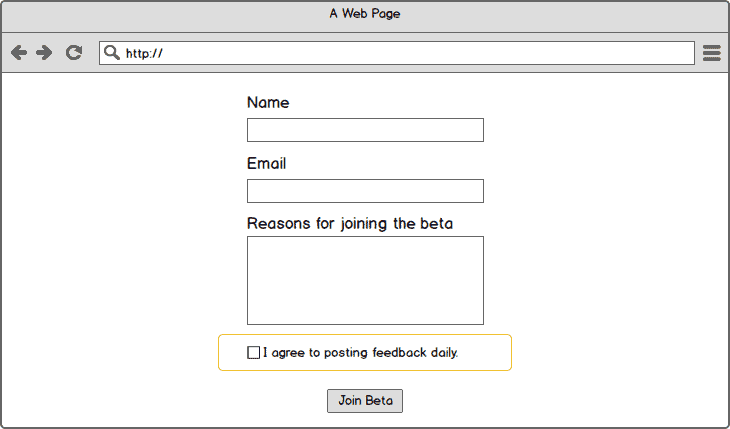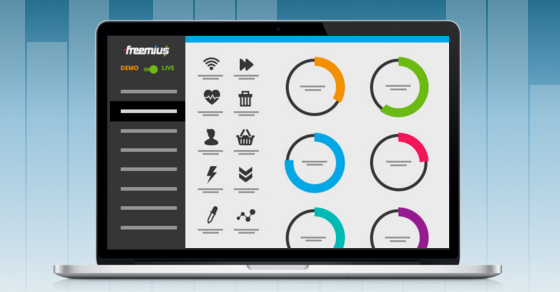|
|
A high-quality beta testing stage forms the backbone of any successful premium plugin release schedule. One cannot underestimate its value in terms of (a) removing bugs and (b) ensuring your plugin actually provides an intuitive solution that users will value.
I must emphasize “high quality” when discussing beta testing, because it doesn’t provide a solution in and of itself. In other words, it’s all too easy to have a few people ‘test’ your plugin and feel like the job has been done, when nothing could be further from the truth.
With the above in mind, in this article, we’re going to present you with a step-by-step approach to conducting high-quality beta testing. To top things off, we’ll finish by going through a bunch of common mistakes that you must avoid if your beta testing is to be a success.
Step 1: Find Qualified Beta Testers
Finding ‘qualified’ beta testers for your plugin is crucial; you need to work with people who have a genuine interest in the solution you’re providing.
But how do you find them? We recommend the following locations for identifying and securing qualified beta testers:
On Twitter
The key to finding qualified beta testers on Twitter is in using hashtags effectively. Check out this guide on how to find specific types of people through hashtag data mining and use your newfound skills to identify potential beta testers.
You can also use TweetDeck to track who’s active in your industry or area of relevance. Check out the screenshot below: the first two columns contain generic hashtags, and the last column contains generic and emotional hashtags.

To make the above strategy more effective, combine hashtags with negative words like “sucks“, “bad“, and “worried“. That way, you’ll find people who are truly in need.
On LinkedIn

Groups on LinkedIn can be a goldmine for finding beta testers. As a rule of thumb, only join groups that contain more than 100 members; any less and your time will likely be wasted.
Make sure that you contribute to your group, rather than jumping in with the obligatory “Can you help me?” post straight away. This doesn’t have to take a great deal of time (and you may even found it time well spent), but it’s vital that you don’t portray yourself as all take and no give. The relationships you build in this way can offer many benefits down the line.
A few examples of mid-sized groups would be WordPress Plugin Developer and Masters of WordPress, Joomla, Drupal & Magento, larger groups being WordPress Developers and the WordPress group itself.
On Niche Forums
Niche forums are full of people that are passionate about your area of focus. These guys have taken the time and trouble to register and contribute to a platform that exists outside of the typical social media networks; a sure sign that they have a dog in your fight.
Being a useful community member is extremely important within forums; depending upon how stringent their moderation process is and how ‘passionate’ their members are, you may find yourself out in the cold if you portray yourself as interested only in how others can help you.
We certainly don’t advise you to make your first post a request for beta testers; try to help others (while not being afraid to make it known who you are and what you do) to begin with. If you pick the right forum, you may find that people are only too willing to help when the time comes.
To give you an example, if you’re creating a plugin that helps people post progress goals on their blog, turn to weight loss forums such as NerdFitness. Working on a plugin that adds functionality for onsite marketing? Perhaps try out the Warrior Forum. Think of who will most benefit from your plugin and how it solves their needs, and you’ll have a better idea of how to find a forum that fits.
On Industry Blogs
Focus on laser-targeted blogs in your industry, even if they’re relatively small. You’re not looking to promote your plugin on a big stage; you’re looking for a relatively small number of highly interested folks. You may choose to write a guest post or two for such sites, which can serve not only to promote your plugin, but attract potential beta testers.
A few examples of industry blogs would be Smart Passive Income for digital downloads and affiliate marketing tools, Copy Blogger for optimizing posts and improving the writing experience, and Smashing Magazine for plugins that improve workflows, design, and usability. These are all big players, but show you what an industry blog can look like while providing you with a starting point for your search.
On Specialized Beta Testing Sites
One such example of specialized beta testing sites is Betabound. Just make sure you make your post specific enough to filter the unqualified audience.
Step 2: Ask the Right Questions
Once you have created a small army of beta testers, you need to utilize them effectively. It is an unfortunate truth that your beta testers will only give you valid feedback if you provide them with the right cues at the correct times.
With that in mind, be persistent in asking your testers to answer your questions. The best way to do it is on the dashboard (using a dismissible message that returns if not dealt with).
The process of vetting beta testers can be used to better ensure compliance. For example, when it comes to beta tester signup, add a statement along the lines of “I agree that I will post feedback on a daily basis” that needs to be agreed to.

Here are some of the crucial questions that you want to ask to beta testers:
What Are You Trying to Do?
This should be asked from the dashboard; it will give you greater context with which to understand other questions.
What Confuses You the Most Here?
Ask this question on any page that’s even moderately complicated. This will enable you to improve the interface in terms of intuitiveness and usability.
What Would Stop You from Buying This Plugin?
Ask them to point out the specific parts that were so frustrating that they’ve decided to quit completely.
How Much Would You Pay for This Plugin?
Ask this question with every iteration; as you add and remove features, the user’s perception of the plugin value will change.
Step 3: Avoid These Common Mistakes
If you don’t avoid the mistakes below, you’ll waste a lot of time, and you won’t get the data you need to make your plugin ready.
Giving Away the Plugin for Free
This is important: don’t give away your plugin for free, even in the beta phase. You only want people who will pay for value.
You can give them a steep discount, and make it known that’s a huge benefit.
People who pay to test are more likely to give you regular feedback, since they have their money on the line too. If you need further convincing on why you should charge beta testers, read this.
Making It Hard to Submit Feedback
The average user has a very short attention span, so you need to create feedback submission forms on every admin page.
The form should submit via AJAX, so that you don’t disturb the user’s ‘flow’, which could affect the validity of the feedback.
Setting a Short Testing Timespan
The testing timespan should ideally be eight to ten weeks – you need adequate time to gather feedback, iterate the plugin, and re-test to completion.
Posting New Builds Too Often
If you post new builds all the time, your testers will get confused, and the feedback will be all over the place. Make sure that there is a structure to your beta testing program.
Having Just a Few Testers
Aim for at least 100 quality testers if possible; this will serve to provide a more reliable ‘macro’ view of your plugin. A hundred testers may not be possible, but the more you can manage, the better.
Not Categorizing Feedback
Create category buckets for feedback that focuses on different elements. It’s a good idea to create tags for every build too.
Conclusion
Beta testing is an essential stage in the creation of a successful premium plugin. Time spent here will pay back dividends in the future.
Here’s what you should do to make your beta testing program successful:
- Find highly targeted beta testers. You don’t want to get feedback from someone who’s not ultimately going to be a user.
- Ask the right questions. You need to focus on feedback that you can act upon.
- Avoid common mistakes, such as not categorizing feedback.
Are you new to beta testing or are you a seasoned pro? We’d love to hear from you in the comments section below!








Nice write-up and insights. I'd add that the Advanced WordPress Facebook group and Slack channel are perfect places to find beta-testers as well. I've done several successful beta campaigns and gained very valuable feedback from our members there.
Thanks!
That's a great idea!
Thanks Matt!
Great idea, which channels specifically? There are 62 in the WP Slack group?
Vova, any snippets of code used for embedding feedback forms in the plugin? I'm going to start beta testing soon and would like to use a feedback form that sends data to my web server rather than relying on email. Unless you do it differently?
Hi Mike, if you have a curated beta testing group, I don't see a reason making the effort and embedding the form right in the plugin. You can simply create a Google form and email it to them after the testing period (or something like that). Or maybe I didn't understand your intention?
Nice content . Thank you for sharing.
I knew nothing about beta testers.